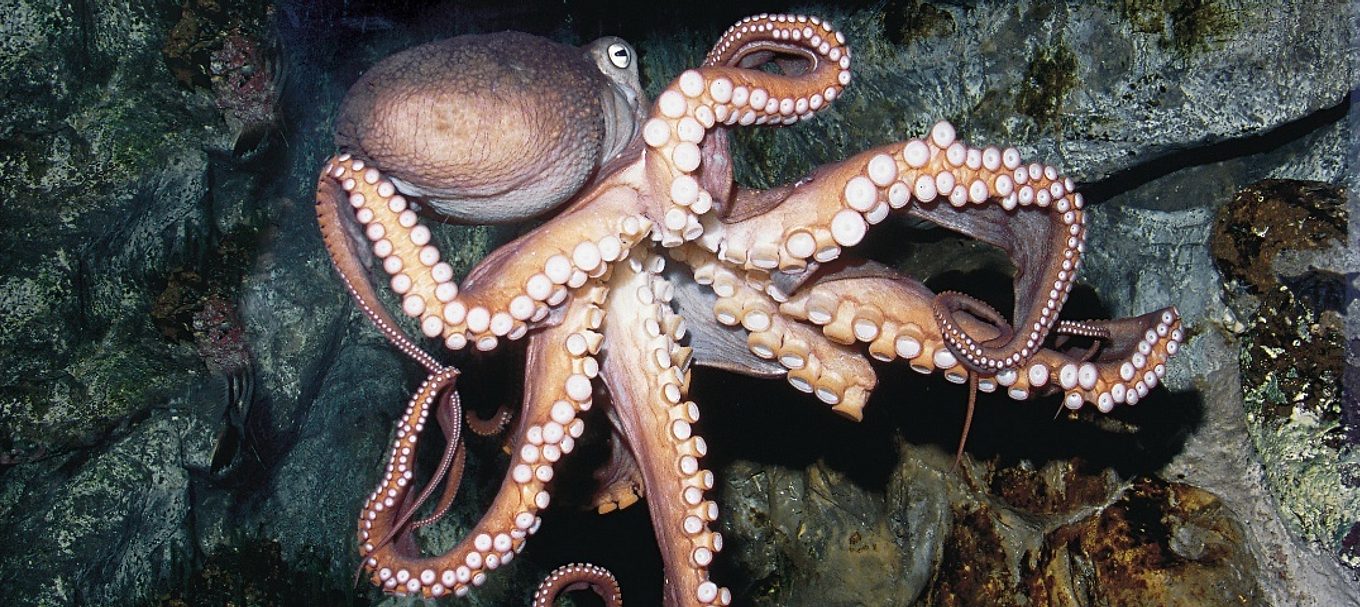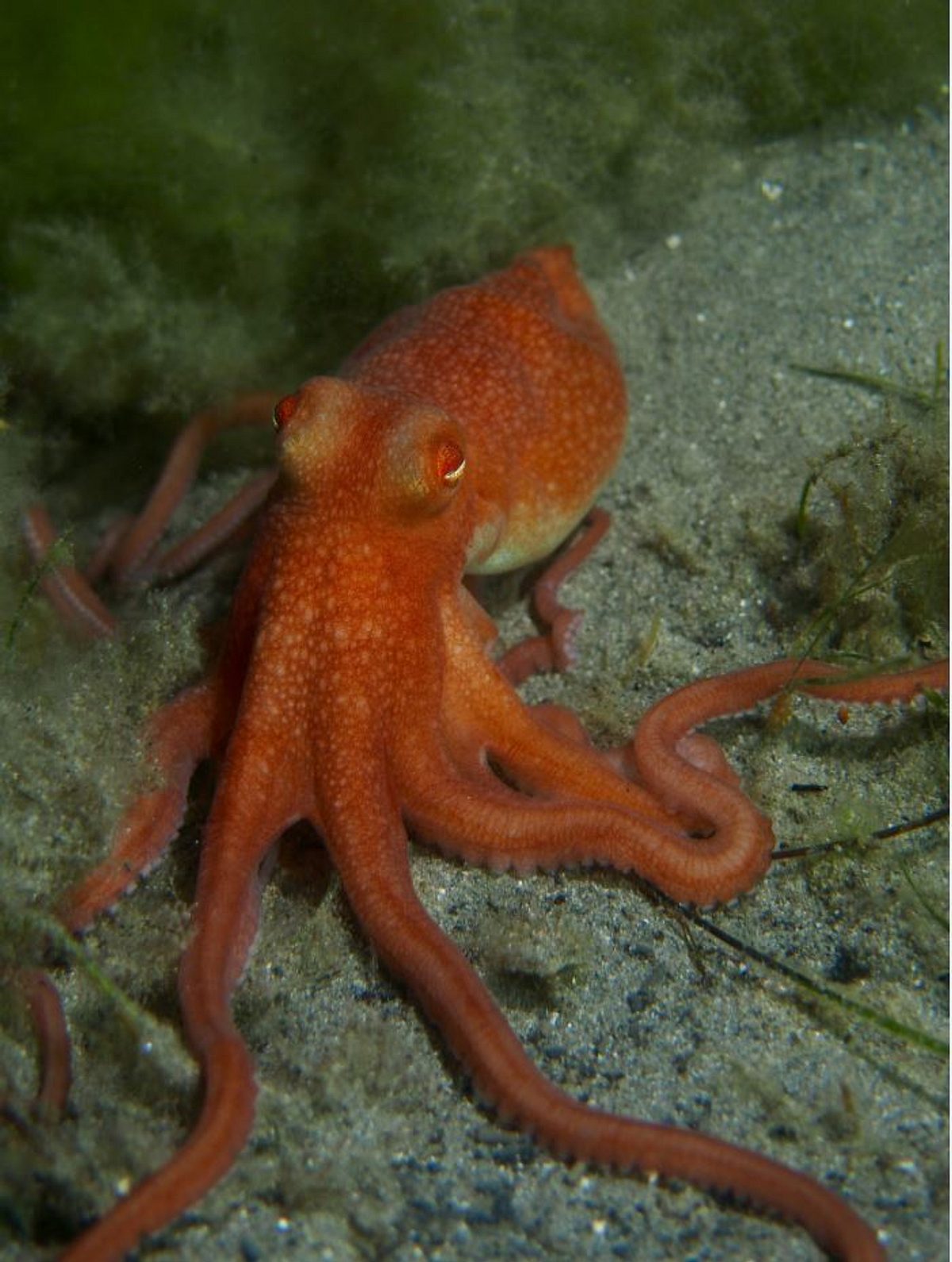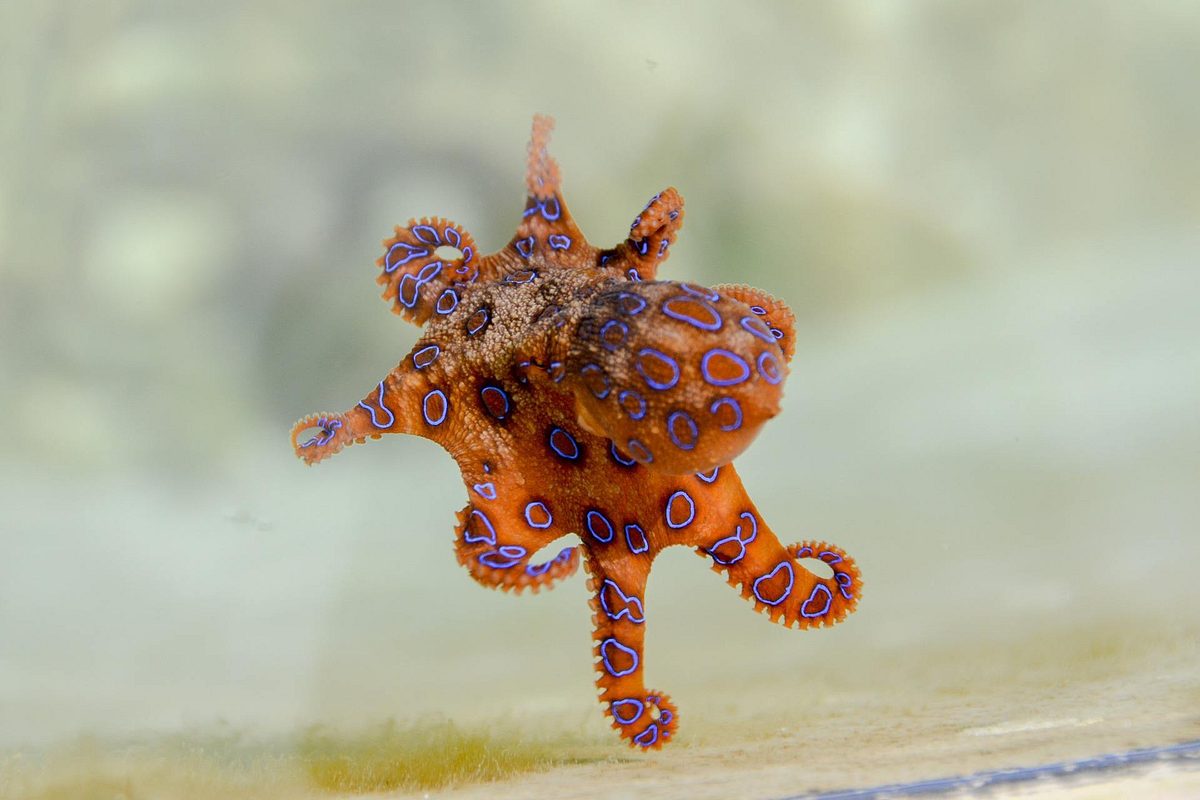
Where to spot South Australia’s octopuses
Along with the famous giant Australian cuttlefish at Whyalla and the magnificent squid that you can swim with off the Adelaide coast, octopuses belong to the cephalopod family.
There are many octopus species that can be found in South Australia’s marine parks. A popular one is the Maori, which as its name suggests, is found in the waters around New Zealand as well as southern Australia.
Maori Octopus at Western Cove in Encounter Marine Park
Maori octopus at Western Cove in Encounter Marine Park
It’s the largest octopus in Australian waters, growing up to 10 kilograms. It’s also the third largest octopus in the world, behind the north Pacific giant and the seven-armed octopus.
Other common species in Australia include the sand octopus, which are expert burrowers, the tiny pygmy octopus, and the ‘shell’-living paper nautilus.

Swim to the jetty
You can spot the eight arms – not tentacles – of the eighth smartest animal in the world underwater at any of SA’s metropolitan and regional beaches.
All you need to do is dive or snorkel around the jetties. But brush up on your ‘Where’s Wally’ skills – the octopus is a master of disguise, just like Hank from Finding Dory.
Octopuses may not be easy to find, but their bizarrely beautiful rounded bodies, bulging eyes and eight long arms are a sight worth your time.
Getting tentacle
If you’re a know-it-all, you're probably aware that they're called octopuses and not octopi. But did you know that their oesophagus go through their brain? Then read on.
Here are eight fast facts about octopuses:
- They mainly eat crabs and crayfish.
- They live in rocky reefs and seagrass beds in bays and coastal waters.
- Most octopuses live for about 18 months.
- They have three hearts and blue blood.
- The female octopus produces one egg mass and dies soon after the eggs have hatched.
- They explore with their arms and suckers. The suckers can taste the difference between sweet, sour and bitter, and can feel if something's rough or smooth.
- They are closely related to squid and cuttlefish, but are considered the most intelligent of the bunch. Watch how they use their ridiculously smart skills to catch a crab.
- For camouflage they can change both their texture and colour.
Be careful of the blue ones
One other well-known octopus found in SA waters is the blue-ringed octopus, which is one of the state’s most venomous animals.

They camouflage themselves well until provoked, then change colour rapidly, becoming bright yellow with blue flashing rings. Check out how they do it.
The blue-ringed octopus is not aggressive, but be sure to admire its beauty at a safe distance. If you get stung or bitten it can be fatal.
For everything you need to know about SA’s network of marine parks and how they protect and conserve our amazing marine life, check out theMarine Parkswebsite.
This story was originally posted in August 2017.





